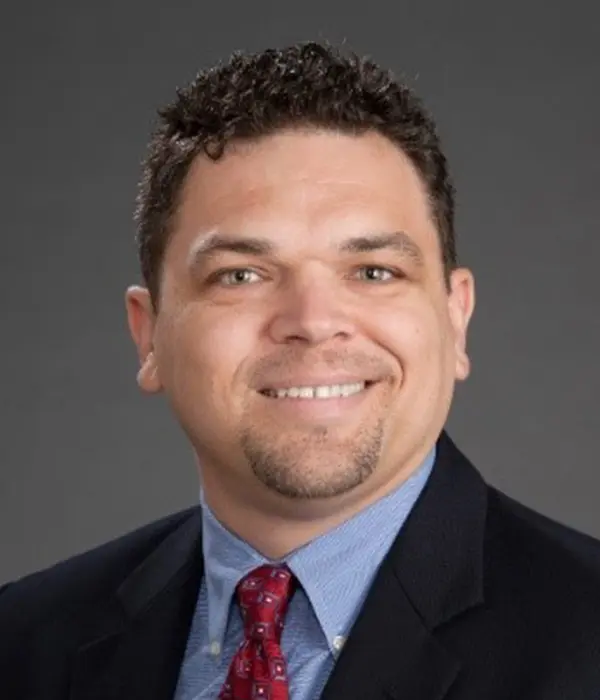
November 12-15, 2024
Las Vegas, NV CME Conference
Registration Options
Pricing Information
Register Now!
In-Person
Virtual
Credit Information
Earn up to 39 CME credits and 9 APRN Pharmacology credits at this CME Conference. This activity is approved for ACCME, AMA, ANCC, APRN and AAPA credit. Please see CME Credit Information for details.
Pricing Information
Don’t Miss Our Early Deal Specials!
The earlier you register, the more you save!
Super Saver
On/Before June 12
$987
$827
Early Bird
On/Before July 12
$1,087
N/A
Advance
On/Before Oct. 12
$1,137
$877
Standard
After Oct. 12
$1,157
$927
Bonus!
In-person conferences include FREE virtual access!
Includes a FREE On-demand course by topic! Up to 13 CME hours - a $297 value!
Receive a $100 rebate check when you book 3 nights at our host hotel using our group code!
Skin, Bones, Hearts & Private Part’s 2024 Las Vegas conference will be held at Harrah’s Las Vegas Hotel and Casino, where the fun never stops. Harrah’s hotel features fresh new rooms, an expansive casino area, exciting nightlife, and entertainment.
Hotel rooms come with Wi-Fi, flat-screen TVs and marble showers. Suites add living rooms, wet bars and whirlpool tubs; some include dining areas. Amenities include a bustling casino, and live comedy, magic and music performances, as well as a nightclub and a piano bar. There’s also a fitness center, a spa, a salon and an outdoor pool.
Harrah’s features such culinary delights as Ruth’s Chris Steak House, Ramsay’s Kitchen, Bobby’s Burgers by Bobby Flay, a 24/7 dining hall and much more. Come as you are, bring all your fun, and let loose at this upbeat Las Vegas hotel located in the center of the Vegas Strip.
Also, special rates apply before and after the conference – enjoy some extra leisure time!
We have negotiated significantly reduced room rates for Skin, Bones, Hearts & Private Parts guests at Harrah’s. If you need hotel reservations and have not yet made your arrangements, you are encouraged to do so immediately as rooms may sell out prior to the cutoff dates listed below.
HOTELRATES AND OFFERS
Reduced room rates start at only $35 (Sun-Thurs) and weekend rates are $155 (plus $30 resort fee & tax).
Rates are only guaranteed until October 18, 2024.
To make reservations, please call 1-888-458-8471 and reference group code: SHSBH4
Receive a $100 rebate check by booking your guest room at our host hotel!
BONUS: In-person registration includes FREE virtual access during the conference; watch sessions from your hotel room, poolside, or wherever there’s a WiFi connection. Just bring your personal device!
Conference Location
Harrah’s Las Vegas Hotel and Casino
3475 S. Las Vegas Blvd.
Las Vegas, NV, 8910
Daily Schedule
Whether you practice full-time and strive to sharpen your skills, or you work occasionally and need to improve your knowledge base, there’s something for everyone here!
Fun Things To Do
See our recommendations for fun things to do and see while in Las Vegas, NV. Enjoy the many attractions while earning your CME credits with Skin Bones CME.
Book your reservation under our group code and receive these resort amenities. Click here to learn more.
| RESORT AMENITIES | OTHER RENTAL COMPANIES | SANDESTIN RENTALS |
|---|---|---|
| Owner Fees | $200+ | NA |
| Service Fees | $150 | NA |
| Cleaning Fees | $150 | NA |
| Cancellation Fees | $500 | NA |
| Resort Tram * | Not Available | FREE – Tram service starts at 6:30 am, see below |
| Health Club/Fitness Center | $40/Day | FREE |
| Bicycle Rentals (4hrs for 2) | $120 | FREE |
| Kayak & Boogie Board Rental | Kayak $35/hr Boogie Board $10/hr | FREE |
| 2 Pools w/ Towel Service | NA | FREE |
| Tennis Court Time | $17/person/hour | FREE |
Q: What are the differences in reserving Sandestin accommodations via the link above vs. renting through other companies like VRBO, Airbnb, etc?
A: Booking directly via the link above guarantees guests a much more enjoyable and budget-friendly stay. Please see details above.
Q: Can I enjoy the resort tram if I don’t book directly through Sandestin?
A: Parking is free for all attendees. The tram will begin complimentary tram service at 6:30 am to transport attendees to the meeting Tuesday – Friday. You can arrive stress-free and enjoy a nice relaxing breakfast and not worry about finding a place to park. Plus, you’ll never get caught in the rain, and your family can use your car to head to the beach, outlets, and other fun activities. (Please see details above)
- Experience all the resort amenities
- Sleep a little later and never be late.
- Restaurants on-site for your enjoyment such as Ruth’s Chris Steak House, Ramsay’s Kitchen, Bobby’s Burgers by Bobby Flay, Pizza Cake by Buddy V, Starbucks, Ben & Jerrys’s and more.
- Networking at all hours
- All your friends stay at the conference hotel.
- Staying on-site allows you to run back to the room to drop off/pick up anything you need.
Top Reasons To Stay With Us
Top Reasons To Stay With Us

- Breakfast/Lunch: Breakfast will be provided as part of your registration and will be available Tuesday – Friday from 6:30 – 8:00 am. Refreshments will be served throughout the day as well. Please refer to final schedule for times. Lunch is on your own (sponsored lunches will be announced if applicable).
- Beverage Service: Provided each day of conference.
Meal Plans
Meal Plans

Parking
Self Parking: Monday - Thursday
1st hour (FREE) · 1-3 hours ($15) · 3-24 hours ($18 per day)
Self Parking: Friday - Sunday
1st hour (FREE) · 1-24 hours ($23 per day) (Hotel Lodger $18)
Valet Parking: Monday - Wednesday ($36)
Valet Parking: Thursday - Sunday ($40)
Caesars Rewards Platinum, Diamond & Seven Stars members: Valet & Self Parking is Complementary
Parking

- Harrah’s Las Vegas Hotel and Casino
- Bobby's Burgers by Bobby Flay
- Center of the Vegas Strip
- Complimentary Wi-Fi
- Gordon Ramsay's Kitchen
- Harrah's Las Vegas Piano Bar
- Near Bellagio Fountains
- Pool, Fitness Center, Spa & Salon
- World Class Dining & Entertainment
Hotel Amenities
Hotel Amenities

Important Information Regarding Hotel Reservations
We kindly ask that you make your hotel reservation at our host property. We are committed to these contractual obligations in order to bring the guest room rates down from regular pricing. If you stay at a different hotel, we may fall short of our housing obligations and will be responsible for paying lost income to our hotels. This could mean higher registration fees and fewer benefits for participants. Thank you for your understanding and for making our educational programs the best they can be.
On occasion, travel websites may lure you with minor “discounts”, but please realize there are restrictions and penalties associated with these “deals.” By booking directly with our host hotel using our group code, you’ll not only receive a $100 rebate but also you’re guaranteed exclusive benefits such as renovated rooms, discounted resort fees, ability to change or cancel penalty-free and more.
Daily Session Info and Presentations
Whether you practice full-time and strive to sharpen your skills, or you work occasionally and need to improve your knowledge base, there’s something for everyone here! Perhaps you just want to stay current and pass your recertification exams. Plus, this exciting program allows participants to come early and/or stay over the weekend for a vacation. Discounted hotel rates apply!
Schedule is preliminary. Topics, times and presenters subject to change.
Product Theater (Non-CME) denoted by *
*Number of hours depends on your course selection. Rx denotes Pharmacology hours. Daily CME credits listed are the maximum number of credits available for that specific day.
Monday, November 11 – Early Registration 2:00 – 5:00 pm
Dermatology

Kristin Rygg
PA-C
Registration
Break
Sponsored Lunch or Lunch on Your Own
Break
Orthopedics


Laurel Short
DNP, FNP-C, AQH
Registration
Break
Sponsored Lunch or Lunch on Your Own
Break
Diabetes

Deborah Hinnen
APN, BC-ADM, CDCES, FAAN, FADCES
Registration
Break
Sponsored Lunch or Lunch on Your Own
Break
Cardiology & Emergency Medicine


Zachary Hartsell
DMSc, PA-C, DFAAPA
Registration & Breakfast
Break
Sponsored Lunch or Lunch on Your Own
Break
Pain Management / Pharmacology Update

Jeremy Adler
DMSc, PA-C
Registration & Breakfast
Break
Sponsored Lunch or Lunch on Your Own
Break
Women’s Health

Nancy Berman
MSN, ANP-BC, NCMP, FAANP
Registration & Breakfast
Break
Lunch on Your Own
Break
When you think of Las Vegas, you think of Las Vegas casinos. They’ve been glorified in films and on the small screen. And for good reason. They’re everything you’ve been told and more. The lights. The sounds. The pulsating energy. You’ll love every second of it. There are more games than ever. And if you’re not sure you know what you’re doing, the dealers are happy to help teach you. So go on. Let the cards, chips and dice fall where they may. Win more with progressive slots and multi-property jackpots. Some “big-time” casinos in Las Vegas include the Bellagio, Wynn, and Aria.
The StripOne of the most visible aspects of Las Vegas’ cityscape is its use of dramatic architecture. The rapidly evolving skyline and constant modernization of hotels, casinos, restaurants, residential high-rises, and entertainment offerings on the Strip, have established it as one of the most popular destinations for tourists in the US, and the world. Many of the largest hotel, casino, and resort properties in the world are located on the Las Vegas Strip. Fifteen of the world’s 25 largest hotels by room count are on the Strip, with a total of over 62,000 rooms.
Hoover DamThe Bureau of Reclamation has conducted tours through the Hoover Dam and powerplant since 1937. Today, close to 1,000,000 visitors a year take the tour and millions more drive across the dam. One of the greatest engineering achievements in human history, the Hoover Dam, continues to draw crowds more than 70 years after its creation.
Grand CanyonUnique combinations of geologic color and erosional forms decorate a canyon that is 277 river miles (446km) long, up to 18 miles (29km) wide, and a mile (1.6km) deep. The Grand Canyon continues to overwhelm our senses with its immense size.
Red Rock CanyonRed Rock Canyon was designated as Nevada’s first National Conservation Area. Red Rock Canyon is located 17 miles west of the Las Vegas Strip on Charleston Boulevard/State Route 159. The area is 195,819 acres and is visited by more than one million people each year. In marked contrast to a town geared to entertainment and gaming, Red Rock offers enticements of a different nature including a 13-mile scenic drive, more than 30 miles of hiking trails, rock climbing, horseback riding, mountain biking, road biking, picnic areas, nature observing and visitor center with exhibit rooms and a book store.
The Fountains of BellagioA refreshing addition to your entertainment options, the Fountains of Bellagio were destined to romance your senses. Take in a complimentary Las Vegas show of water, music and light thoughtfully interwoven to mesmerize its admirers. All for your amusement, the most ambitious, choreographically complex water feature ever conceived amazes against the beautiful backdrop of Las Vegas’ lavender sky. Each dynamic performance from the Fountains collection is unique in its expression and interpretation. Fall in love with the stunning nature of this unprecedented aquatic accomplishment while relishing a clever concert of opera, classical and Broadway tunes.
Caesars PalaceIt’s time to indulge and treat yourself like a Caesar. Play, dine and unwind like royalty at Caesars Palace Las Vegas, the remarkable, palatial center-Strip resort. From luxurious hotel rooms to world-class entertainment, it’s time to experience a trip that’s one for the books.
Treasure IslandThis resort features some of the finest rooms and suites on the Las Vegas Strip available at a great value through the many deals, offers and promotion codes exclusive to Treasure Island - TI Las Vegas. Relax by the outdoor tropical pool or the elegant spa and salon. Enjoy your choice of eight restaurants, nine bars and lounges, 95,000 sq. ft. of live casino gaming, and the salient Mystère by Cirque du Soleil. Modern meeting space and wedding chapels accommodate Las Vegas events of any kind. Connected by pedestrian bridges to Fashion Show shopping mall and Grand Canal Shoppes as well as a tram to The Mirage and short walking distance to Venetian/Palazzo, Sands Expo and Wynn/Encore, Treasure Island - TI Hotel and Casino offers one of the best locations and values in Las Vegas, Nevada USA.
The Stratosphere TowerVisible throughout the city, dominating the Las Vegas skyline - The STRAT Hotel, Casino & Tower is where the Las Vegas Strip begins and ends. We’ve reimagined your experience from top to bottom, offering renovated hotel rooms, refreshed casino floor, all-new dining options, award-winning entertainment, and an exhilarating Tower experience.
Infinite Las Vegas ShowsSee one of the many fabulous shows currently running in Las Vegas.


